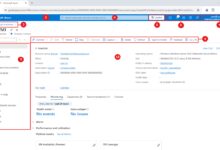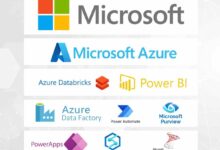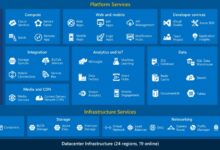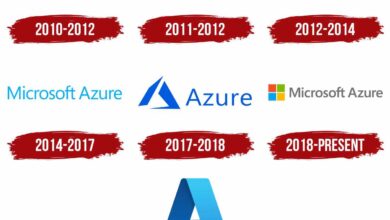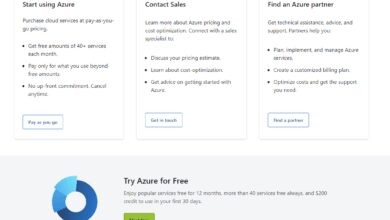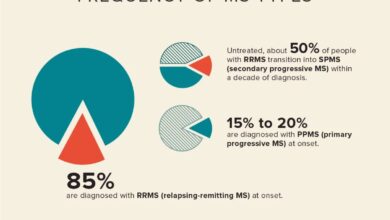Azure Login Portal: 7 Ultimate Tips for Seamless Access
Accessing the Azure login portal doesn’t have to be complicated. Whether you’re a cloud beginner or an IT pro, this guide breaks down everything you need to know to log in securely and efficiently—plus common issues and how to fix them fast.
Understanding the Azure Login Portal

The Azure login portal is the primary gateway to Microsoft Azure, a comprehensive cloud computing platform used by millions of businesses worldwide. It allows users to manage virtual machines, databases, networking, security, and more—all from a centralized web interface. Accessing this portal securely is the first step in leveraging Azure’s full potential.
What Is the Azure Login Portal?
The Azure login portal, officially known as the Azure portal, is a web-based console that provides a graphical user interface (GUI) for managing Azure resources. When users navigate to portal.azure.com, they are directed to the login screen where authentication is required before accessing their cloud environment.
- It serves as a single point of control for all Azure services.
- Users can deploy, monitor, and manage resources across global data centers.
- The portal supports role-based access control (RBAC), enabling organizations to define precise permissions.
Unlike command-line tools or APIs, the Azure login portal offers an intuitive dashboard with visual metrics, making it ideal for administrators and developers who prefer a point-and-click experience.
How Authentication Works
Authentication in the Azure login portal is powered by Microsoft Entra ID (formerly Azure Active Directory). This identity and access management service verifies user credentials before granting access.
- Users sign in with an email address associated with their Microsoft account or organizational account.
- Multi-factor authentication (MFA) can be enforced for added security.
- Single Sign-On (SSO) integration allows seamless access across multiple enterprise applications.
“The Azure portal is not just a dashboard—it’s the command center for your entire cloud infrastructure.” — Microsoft Cloud Documentation
Step-by-Step Guide to Access the Azure Login Portal
Logging into the Azure portal is straightforward, but understanding each step ensures a smooth and secure experience. Follow this detailed walkthrough to access your Azure environment without hiccups.
Navigate to the Official Login Page
The first step is visiting the correct URL: https://portal.azure.com. Always ensure you’re on the official Microsoft site to avoid phishing attempts.
- Avoid clicking on unverified links from emails or messages.
- Bookmark the page for quick future access.
- Use trusted devices and secure networks when logging in.
Some organizations may use custom domains for their Azure login portal (e.g., mycompany.portal.azure.com), especially if they’ve configured branded sign-in pages through Microsoft Entra ID.
Enter Your Credentials
Once on the login page, enter your username—typically an email address linked to your Microsoft or work/school account. After entering the email, click ‘Next’ to proceed.
- If you’re using a personal Microsoft account (like Outlook.com), you’ll be prompted for that password.
- For organizational accounts, your company’s login policy will apply, which may include conditional access rules.
- The system may auto-detect your identity provider based on domain configuration.
After entering your password, the portal may prompt for additional verification if MFA is enabled.
Complete Multi-Factor Authentication (MFA)
MFA is a critical security layer that requires users to verify their identity using at least two methods. Common MFA options include:
- Mobile app notifications (e.g., Microsoft Authenticator)
- Text message codes
- Phone calls
- Hardware tokens or FIDO2 security keys
For example, after entering your password, you might receive a push notification on your smartphone. Approving it completes the authentication process and grants access to the Azure login portal.
Common Issues When Using the Azure Login Portal
Despite its reliability, users occasionally face challenges when trying to log in. Identifying and resolving these issues quickly minimizes downtime and improves productivity.
Forgot Password or Locked Account
One of the most frequent problems is forgetting your password or getting locked out due to multiple failed attempts. Microsoft provides self-service password reset (SSPR) to help users regain access.
- Click ‘Forgot password?’ on the login screen.
- Verify your identity via email, phone, or security questions.
- Set a new password and log back in.
Organizations must enable SSPR in Microsoft Entra ID for it to be available. Administrators can configure this under Authentication methods in the Azure portal.
Browser Compatibility and Cache Issues
Not all browsers support the full functionality of the Azure login portal. Incompatible or outdated browsers may cause login failures, slow loading, or broken UI elements.
- Supported browsers include Microsoft Edge, Google Chrome, Mozilla Firefox, and Apple Safari.
- Ensure cookies and JavaScript are enabled.
- Clear cache and site data if the portal behaves unexpectedly.
For instance, if the login screen freezes after entering credentials, clearing the browser cache often resolves the issue. Alternatively, try using an incognito or private browsing window.
Conditional Access Policy Blocks
Conditional Access (CA) policies are security rules set by administrators to control how and when users can access Azure resources. These policies can block logins based on factors like location, device compliance, or risk level.
- A user logging in from an unfamiliar country may be blocked.
- Devices not joined to Azure AD or lacking encryption may fail compliance checks.
- High-risk sign-ins detected by Identity Protection may trigger automatic blocks.
If blocked, users should contact their IT department to review the policy or request access. Administrators can view sign-in logs in the Azure Active Directory > Sign-ins section to diagnose the cause.
Security Best Practices for the Azure Login Portal
Securing access to the Azure login portal is paramount, as unauthorized entry could lead to data breaches, resource misuse, or financial loss. Implementing robust security practices protects both individuals and organizations.
Enable Multi-Factor Authentication (MFA)
MFA is one of the most effective ways to prevent unauthorized access. Even if a password is compromised, attackers cannot log in without the second factor.
- Enforce MFA for all users, especially administrators.
- Use phishing-resistant methods like FIDO2 security keys or the Microsoft Authenticator app.
- Avoid relying solely on SMS-based codes, which are vulnerable to SIM swapping.
According to Microsoft, accounts with MFA enabled are over 99.9% less likely to be compromised.
Use Role-Based Access Control (RBAC)
RBAC allows administrators to assign permissions based on job functions, minimizing the risk of excessive privileges.
- Assign built-in roles like ‘Reader’, ‘Contributor’, or ‘Owner’ as needed.
- Create custom roles for granular control over specific resources.
- Regularly audit role assignments to remove unnecessary access.
For example, a developer may only need ‘Contributor’ access to a specific resource group, not full subscription-level control.
Monitor Sign-In Activity
Regularly reviewing sign-in logs helps detect suspicious behavior early. The Azure portal provides detailed insights into every authentication attempt.
- Navigate to Azure Active Directory > Monitoring > Sign-ins.
- Filter logs by user, app, status (success/failure), or risk level.
- Set up alerts for failed logins or logins from unusual locations.
“Visibility into who is accessing your cloud environment is the foundation of cloud security.” — Microsoft Security Best Practices
Customizing Your Azure Portal Experience
Once logged in, users can personalize the Azure login portal to improve efficiency and focus on relevant resources. Customization enhances usability and reduces navigation time.
Pinning Resources to the Dashboard
The Azure dashboard is fully customizable, allowing users to pin frequently used resources, charts, and monitoring tools.
- Open a resource (e.g., a virtual machine or storage account).
- Click ‘Pin to dashboard’ and choose the target dashboard.
- Arrange tiles by dragging and resizing them.
This is especially useful for DevOps teams who need real-time visibility into key performance indicators.
Creating Custom Dashboards
Users can create multiple dashboards for different purposes—such as production monitoring, cost analysis, or security oversight.
- Click ‘New dashboard’ from the homepage.
- Add widgets for metrics like CPU usage, network traffic, or budget alerts.
- Share dashboards with team members for collaborative monitoring.
Custom dashboards support themes, layouts, and access controls, making them powerful tools for tailored cloud management.
Using the Azure Portal on Mobile Devices
While the primary Azure login portal is web-based, Microsoft offers mobile solutions for on-the-go management and monitoring.
Azure App for iOS and Android
The official Microsoft Azure app allows users to monitor resources, receive alerts, and perform basic actions from their smartphones or tablets.
- Download the app from the App Store or Google Play.
- Log in using the same credentials as the web portal.
- View resource health, costs, and notifications.
Although full administrative tasks are limited on mobile, the app is invaluable for staying informed about critical events.
Responsive Design and Browser Access
The Azure portal is optimized for responsive design, meaning it adapts to smaller screens when accessed via mobile browsers.
- Some features may be hidden or simplified for usability.
- Touch gestures work well for navigation.
- For complex operations, switching to a desktop is recommended.
Mobile access is best used for monitoring rather than configuration changes.
Advanced Features of the Azure Login Portal
Beyond basic login and navigation, the Azure portal offers advanced tools that empower users to automate, troubleshoot, and optimize their cloud environments.
Azure Cloud Shell Integration
The Azure portal includes an embedded command-line interface called Azure Cloud Shell, which supports both Bash and PowerShell.
- Access it by clicking the >_ icon in the top toolbar.
- No local installation is required—it runs in the browser.
- Persistent storage can be configured using an Azure file share.
This feature is perfect for running scripts, managing resources via CLI, or troubleshooting issues without leaving the portal.
Resource Graph Explorer
The Resource Graph Explorer allows users to query and analyze Azure resources at scale using a SQL-like language called Kusto Query Language (KQL).
- Search for resources across subscriptions.
- Identify misconfigurations or orphaned resources.
- Export results for reporting or compliance audits.
For example, you can run a query to find all unattached disks or public-facing storage accounts.
Cost Management and Budgeting Tools
The Azure portal includes robust tools for tracking spending, setting budgets, and optimizing resource usage.
- View detailed cost analysis by service, region, or tag.
- Set monthly budgets with alert thresholds.
- Receive recommendations for reserved instances or shutdown schedules.
These tools help prevent bill shock and promote financial accountability in cloud operations.
What is the correct URL for the Azure login portal?
The official URL for the Azure login portal is https://portal.azure.com. Always ensure you are on this site to avoid phishing scams.
How do I reset my Azure portal password?
If you’ve forgotten your password, click ‘Forgot password?’ on the login screen. Follow the prompts to verify your identity and set a new password. Your organization must have self-service password reset (SSPR) enabled for this to work.
Why can’t I log in to the Azure portal?
Common reasons include incorrect credentials, account lockout, browser issues, or conditional access policies blocking your sign-in. Check your internet connection, clear your browser cache, and contact your administrator if the problem persists.
Is multi-factor authentication required for Azure login?
MFA is not mandatory by default but is highly recommended. Organizations can enforce MFA through Microsoft Entra ID policies, especially for administrative accounts.
Can I access Azure resources from my phone?
Yes, you can use the Microsoft Azure app on iOS and Android to monitor resources and receive alerts. Full management capabilities are best accessed via the web portal on a desktop.
Mastering the Azure login portal is essential for anyone working with Microsoft’s cloud platform. From secure authentication and troubleshooting common issues to leveraging advanced tools like Cloud Shell and Resource Graph, this guide has covered the full spectrum of portal usage. By following best practices in security, access control, and customization, users can maximize productivity and minimize risks. Whether you’re a beginner or an experienced cloud engineer, the Azure portal remains your most powerful tool for managing the cloud.
Further Reading:
